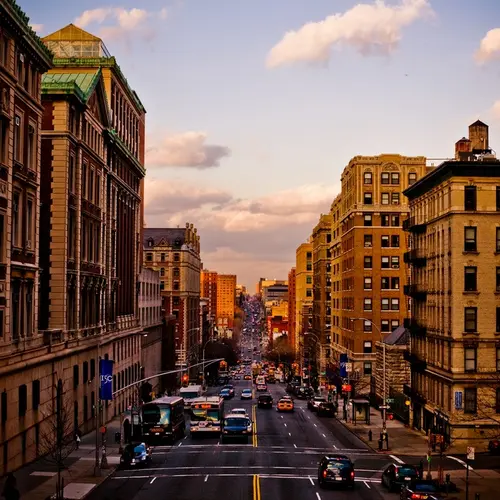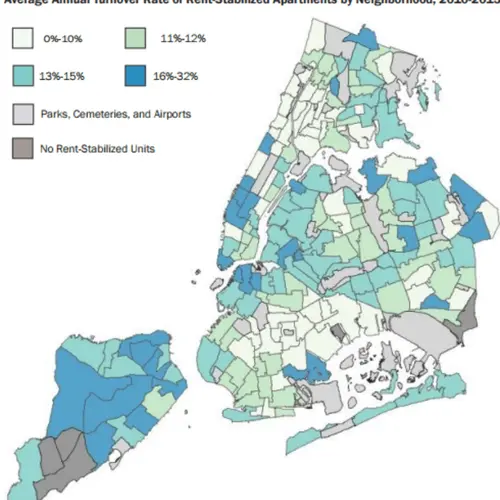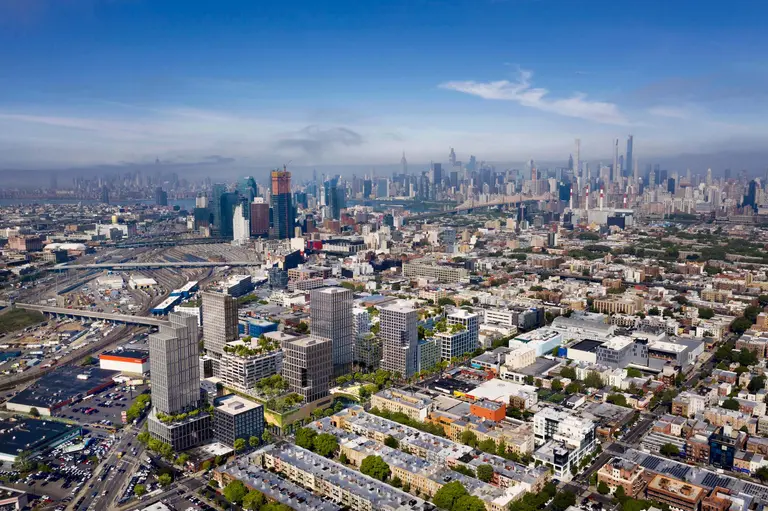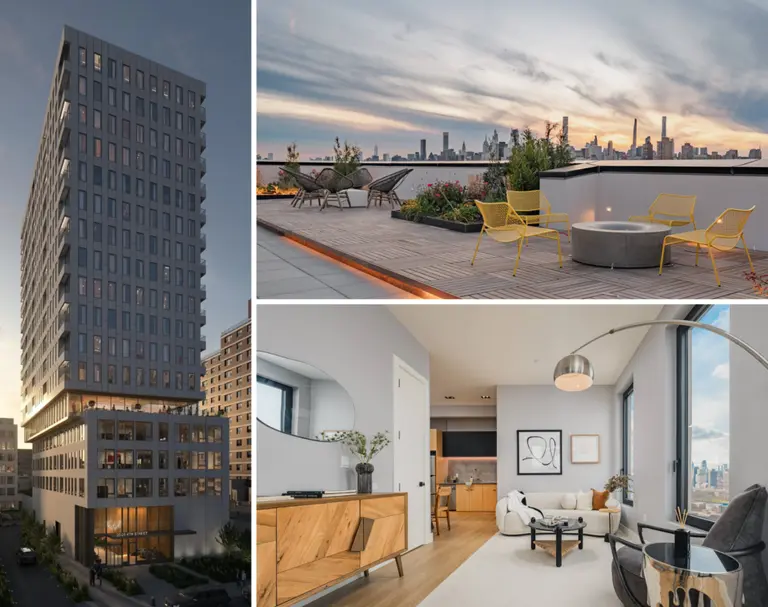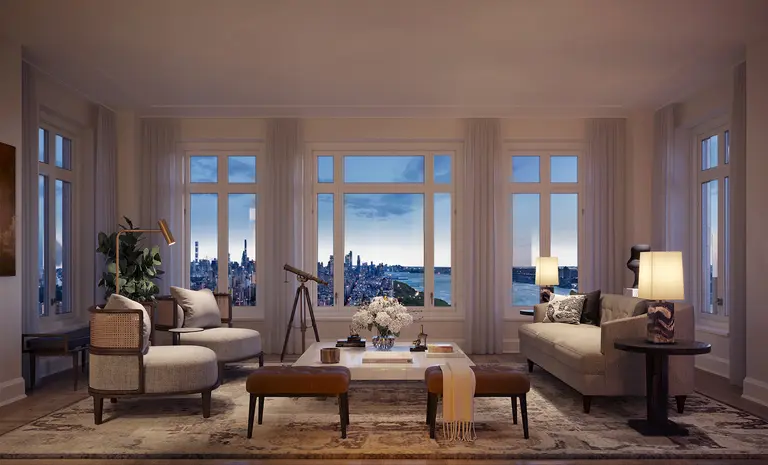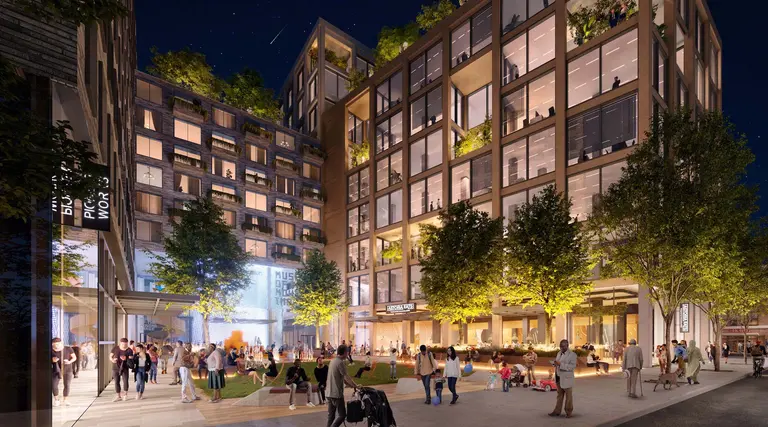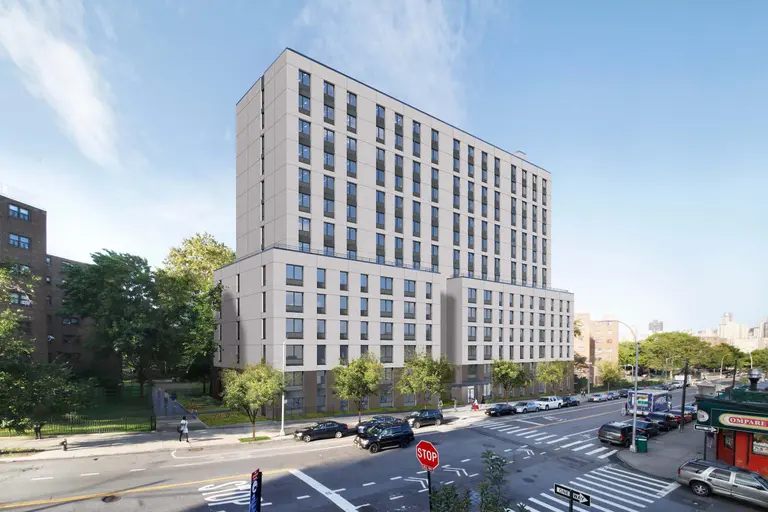Astoria, Morningside Heights and Bay Ridge have highest turnover of rent-stabilized apartments
Scoring a rent-stabilized apartment is a big win in New York City, as these regulated pads usually offer rent at below-market rates and provide tenants more protections against landlords. While more than 925,000 rent-stabilized apartments still exist in the city, these units turn over at a faster rate in certain neighborhoods than others, and their availability continues to dwindle (h/t WYNC). According to a new report by the city’s Independent Budget Office (IBO), the neighborhoods of Astoria, Morningside Heights and Bay Ridge all have high concentrations of rent-regulated housing built prior to 1974 and therefore, higher rates of turnover compared to other parts of the city.
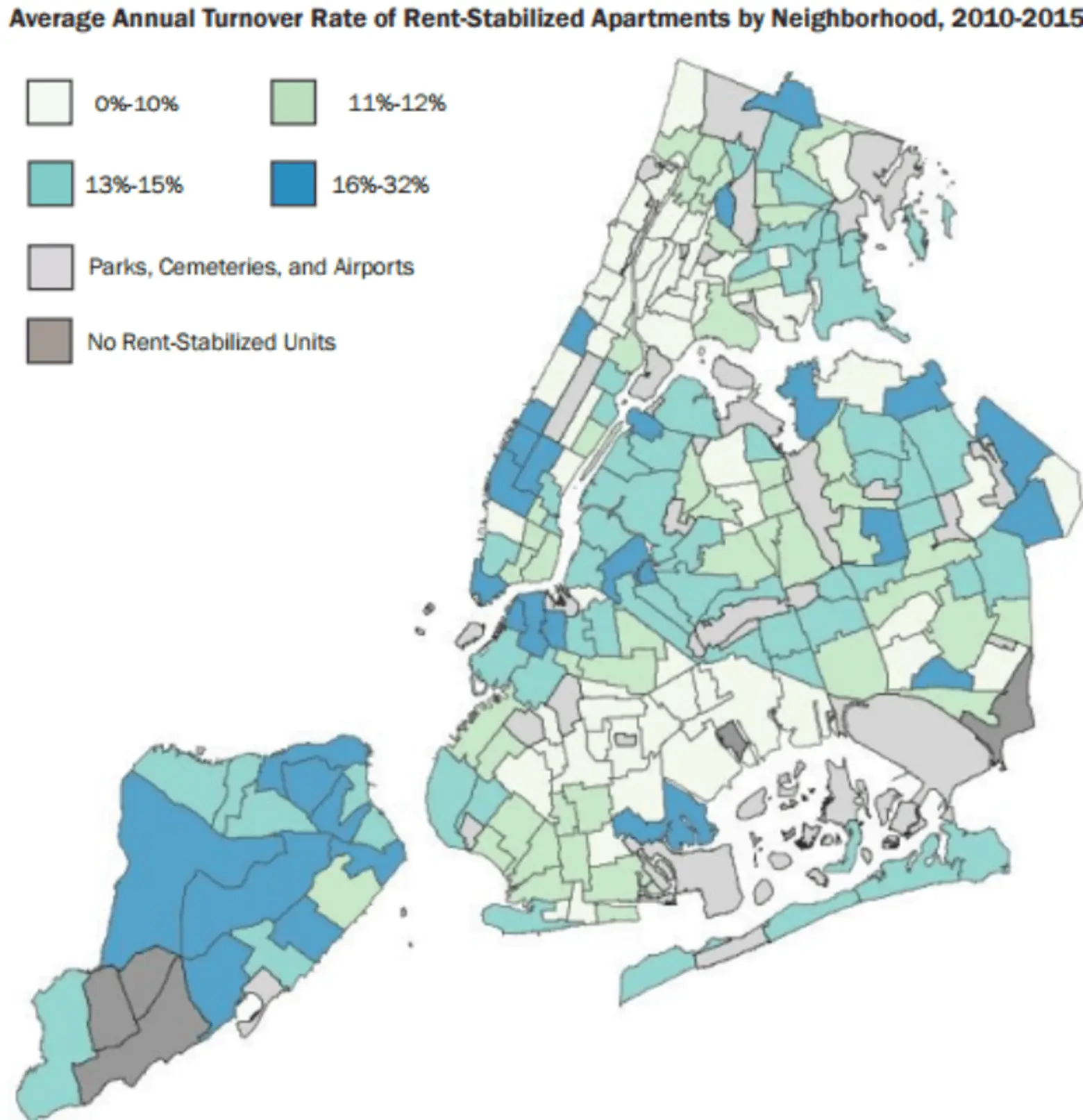
Map via the Independent Budget Office
The IBO examined tenant information for over 900,000 rent-stabilized apartments for at least two years from 2010 and 2015 to calculate how many apartments turn over from one year to the next. The report explains that high turnover rates often indicate tenant mobility, changing neighborhood characteristics, or a landlord’s attempt to vacate apartments in order to legally increase the rent. Low turnover rates may mean tenants feel financially stable and have more resources to resist any attempt to displace them.
Neighborhoods with the highest rate of renters moving out of rent-stabilized apartments regardless of age of building include Battery Park City in Lower Manhattan (32 percent turnover of 5,798 units), New Dorp/Midland Beach on Staten Island (28 percent turnover of 152 units) and Douglas Manor-Douglaston/Little Neck in Queens (25 percent turnover of 461 units).
As 6sqft previously covered, Astoria is the top neighborhood for millennials due to its proximity to Manhattan and its relative affordability. In transforming neighborhoods like this that also have a high number of older units, the older apartments are more likely than new ones to be rented below market rate. As more young people move into these neighborhoods, it increases the chance of current residents being priced out. Diane Brown from the Justice for All Coalition, which organizes against gentrification, told WYNC that members of the coalition constantly complain about the rising rents. “They are moving out because they almost can’t afford the area anymore,” Brown said. “The supermarkets are going up. Everything is changing.”
When looking at Upper Manhattan, the report found that while several neighborhoods have undergone gentrification for many years, there are significant differences in the rate of turnover. Washington Heights had a little over 21,000 rent stabilized apartments and a turnover rate of nine percent, while nearby Morningside Heights had only 7,100 rent stabilized apartments, but a turnover rate of 17 percent. Rent-stabilized apartments on the Upper West Side often have a low turnover rate because the renters are wealthier, making displacement less of a threat.
Enacted in 1969, New York City’s rent stabilization system’s purpose is to protect tenants from unlawful rent increases. While landlords can only increase a current tenant’s rent by two percent with a two-year lease, once vacant, the landlord can increase the rent of the unit by roughly 20 percent. In 2015, 6sqft learned that nearly 250,000 units have lost rent regulation protections since 1994, with 50,000 rent stabilized apartments being lost in just eight years.
[Via WYNC]
RELATED:
- Rent Stabilization Demystified: Know the Rules, Your Rights, and if You’re Getting Cheated
- Map highlights the correlation between evictions and rent stabilization loss in NYC
- Astoria is NYC’s top ‘hood for millennials seeking roommates
- Man Overcharged by Landlord for 16 Years Awarded $900K and a $784/Month Apartment
